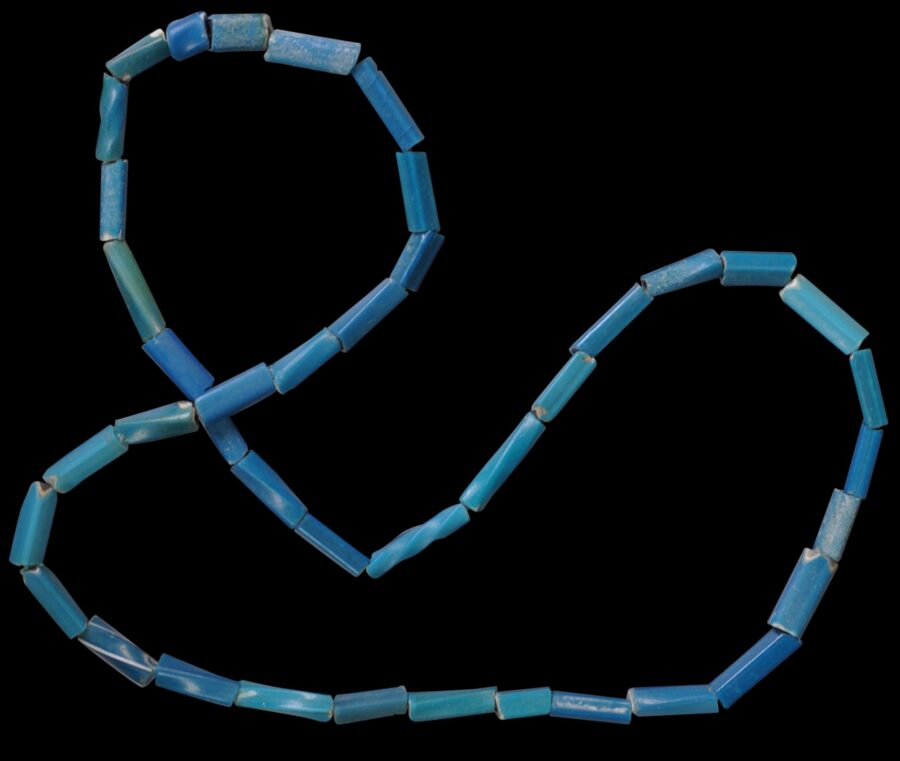Enquiry about object: 9837
Early & Very Rare Spanish Nueva Cadiz Glass Trade Beads for the South American & Philippines’ Markets
Venice/Spain for the Spanish Colonial Market early 1500s
circumference: approximately 67cm, weight: 43g
Provenance
private collection, Canada; acquired in Venezeula
This strand of 41 very rare, museum-quality beads was produced most probably in Venice on behalf of Spanish merchants for the Spanish colonial market and represents the earliest examples of goods to be traded between Europe and South America particularly. Similar beads, in smaller quantities and also dating to the early 16th century, have been found in the Philippines. It is likely that some were also traded to Africa at this time.
The strand comprises a type of bead known as Nueva Cadiz after the commercial port on the Venezuelan island of Cubagua where they were noticed by archaeologists. Nueva Cadiz was established by the Spanish in the early 16th century and briefly goods destined to be traded across the American continent first arrived in Nueva Cadiz. The town was abandoned by the 1540s.
Generally, Nueva Cadiz beads are cylindrical and made from monochrome-blue drawn canes with a square-shaped cross section with rounded corners and three layers, the last of which is transparent blue (Panini, 2007, p. 175). They have particularly small diameters, and are not to be mistaken with later beads which are noticeably thicker and often longer (Liu, 1995, p. 166). Such beads were worked on a hot iron which was heated by a flame from a lamp and so became known as lamp-worked beads.
One of the beads in this strand here has white glass overlay. Several are of helix or spiral form.
The beads are in very fine condition. There are some minor chips here and there commensurate with the beads’ significant antiquity, but this is expected and relatively minor. The over-riding consideration is their rarity – rarely do genuine Nueva Cadiz beads from this period come onto the market.
References
Francis, P., Asia’s Maritime Bead Trade: 300 BC to the Present, University of Hawai’i Press, 2002.
Liu, R.K., A Universal Aesthetic: Collectible Beads, Ornament, Inc, 1995.
Panini, A., Middle Eastern and Venetian Glass Beads: Eighth to Twentieth Centuries, Skira, 2007.











